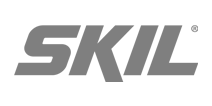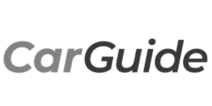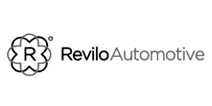In an environment focused on customer engagement, it seems counter-intuitive to optimise a website for one-time-only use. However, at800’s goal was efficiency – to triage their users’ problems and provide the right solution in just one visit. We’d designed the website around this principle, guided by accessibility needs. The client’s commitment to an ongoing programme of UX testing and Conversion Rate Optimisation has allowed them to target key areas of the site and achieve critical goals.
AT800 UX
UX & CRO boost website menu engagement by 57%
- Conversion Rate Optimisation
- UX
Summary
Client objectives
DMSL engaged us to build the at800 website in 2012. at800 is a support programme that ensures Freeview audiences can continue to receive an uninterrupted TV signal should 4G masts cause interference. It’s run by Digital Mobile Spectrum Limited (DMSL), which is funded by the UK 4G mobile operators EE, Telefónica UK/O2, Three and Vodafone.
The website’s purpose is to offer TV viewers clear information about what’s happening and why and to provide user-friendly TV interference diagnostic tools. These tools guide visitors through a series of questions in order to assess what might be causing their signal issues. In our at800 website case study (see below), we highlighted that accessibility was an essential design consideration, in part because the site deals with a technical topic and it’s likely some visitors are not tech-savvy.
No website is perfect – not one! A continuing programme of optimisation is essential because users’ needs and expectations evolve. The objectives of at800’s site is to enable visitors to resolve queries easily and, if appropriate, get extra advice and support primarily through the site. To facilitate this, we worked with the client on a long-term programme of improvements after the website launched, with the objective of providing enough information to help troubleshoot their TV signal issue.
Our solution
What really began to get results was when we started making improvements based on data. User experience (UX) testing gave the evidence we needed to make continual small changes. This ongoing programme of making improvements based on testing data is called Conversion Rate Optimisation (CRO). All the changes we made improved how visitors got the outcome they needed; because changes were based on data from actual users, they couldn’t fail.
CRO uses scientific methods to encourage a deeper level of engagement with digital products or services. As testing is based on data, CRO delivers an almost guaranteed improvement for websites. It also provides statistical evidence eliminating subjective discussions. It helps determine the right solution, the first time. Because of this, it makes the most of resources and budgets. It also supplies a steady stream of qualified information to help get stakeholders on board, enabling businesses and organisations to take calculated leaps.
I like the easy to use navigation style. The simple but effective use of colour, graphical icons and tile format for menus makes it logical and intuitive to see where to navigate to on each page without any thought or searching – USER FEEDBACK
Client outcomes & beyond
In e-commerce, UX and CRO focus on conversions – a sale. As our client’s objectives were based on providing information, the metrics we measure are different. For example, results show fewer people using the contact page or calling engineers – we can surmise they’ve found the information they need and it’s helped them. People are also viewing more pages per session, which indicates increased engagement with the content. For at800, this kind of data is what success looks like. It is proof that, while CRO is an e-commerce super tool, any organisation can feel its benefits.
During our programme of testing, analysis, and change, at800 has seen significant improvements – in some cases in excess of 100%.
The client sends postcards to viewers in areas where a 4G mast has been activated providing information about what to do if they notice new TV interference. On the homepage, visitors are able to select ‘Yes I’ve received a postcard’ to find out more information. We were tasked to make improvements to the page, which comprised a lot of text information in paragraph format. We tested four variants against the existing page. The version that was rolled out elicited an improvement in engagement of 154%. It also reduced users who visit the contact us page by 37%.
In another example, we tailored individual FAQ item pages to encourage further engagement. We designed and tested three variants against the performance of the existing FAQs. The variant change that made it to the website was the one that elicited a 100% improvement in engagement.
Our favourite example increased the mobile menu open rate, plus the click rate once opened. We designed and tested two variants against the performance of the existing mobile burger menu. Changing the menu label and restructuring the menu items gave a significant increase in menu engagement of 57%.
Overall the CRO work we’ve done has increased pages/session by 0.9 pages and session length by 23 seconds, and reduced bounce rate by 16%. You can see how thoroughly the original site was scoped and built in the website development case study.










